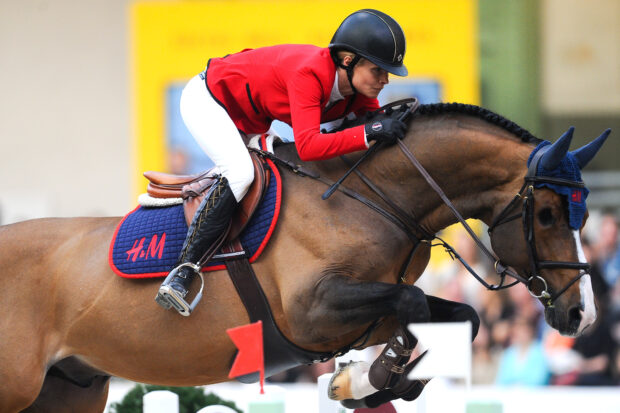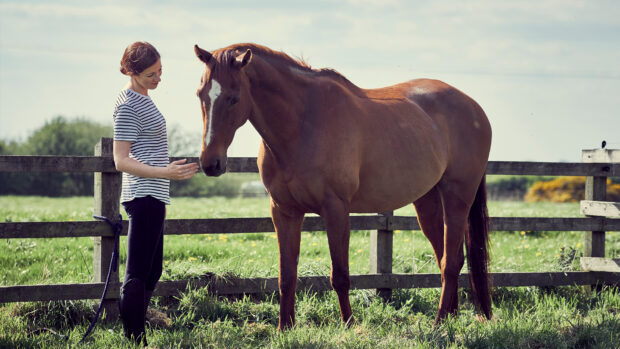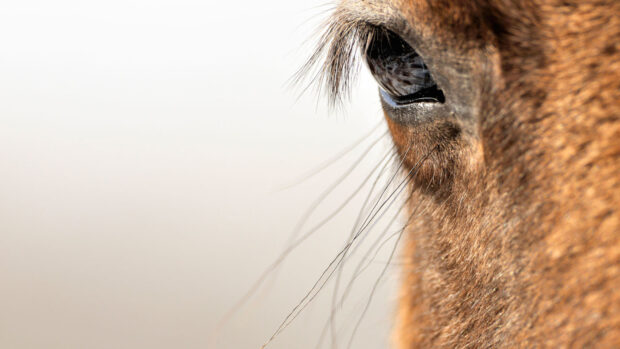The equine eye is made up of a tough, elastic, slightly oval globe, divided into two compartments, each of which contain fluids. Muscles control the eye’s movement.
Functionally, the eye may be compared with a simple camera &ndash the eyelids protect the eye like a lens-hood, the iris controls the amount of light entering the eye and the lens adjusts the focus of the image on the retina.
Eyelids
The eyelids are susceptible to damage in their role as protection to the eye. A vet is needed to repair any damage as loss of lid shape can lead to problems due to infection. A constant “windscreen wiper” effect of the lids over the cornea is essential to keep it healthy.
Conjunctiva
The protective lining layer surrounding the eye is known as the conjunctiva. Problems in this area cause the majority of veterinary visits involving the equine eye. Conjunctivitis in grazing horses is common, particularly during the summer months. Marked by tears and a thickening of the conjunctiva, most cases respond rapidly to topical antibiotic ointments.
Cornea
The clear surface of the eye – the cornea – is frequently damaged accidentally. The extent of the damage needs to be recognised without delay. As with many eye conditions, the main symptoms are:
- a reluctance to face bright light
- tightly closed eyelids
- excessive tear formation.
Corneal damage is often not visible to the naked eye and is only obvious after applying a fluorescent stain. Untreated damage to the cornea can lead to ulceration of the surface,which may ultimately result in blindness. Cloudiness can be caused by a fungal infection, which should clear up with an appropriate anti-fungal treatment.
Iris
Occasionally, small brown cyst-like growths appear on the iris at the edgeof the pupil. If large enough to cover the whole pupil, the horse’s sight will be affected.
Inflammation of the iris – uveitis – can cause acute discomfort and make the horse reluctant to open his eye, although there may not be any more tears than normal. When you part the lids, you will find the pupil contracted compared with an unaffected eye.
Treatment is atropine, applied locally, to counteract muscular spasm of the iris, and is usually combined with topical steroids. Most cases show a good response in two to three weeks. Reoccurring cases are called periodic ophthalmia or “moon-blindness”.
Lens
Apart from being displaced as a result of severe trauma, the most common lens condition is cataract. This termapplies to any lens opacity and is often only discovered during a routine eye examination, such as at pre-purchase. Although seen in foals (congenital cataract), most are found in mature or ageing horses.
Most cases are thought to originate from a previous case of uveitis, but it may simply be old age. Unless the opacity is severe, there will be little visual impairment and should not affect performance. However, some cataracts are progressive, which will eventually lead to blindness.
Retina
Located at the rear of the eye, the retina is fundamental for vision. The retina can become detached as a result of severe trauma or as a complication from an existing inflammation. However, the horse owner cannot detect this – onlyan ophthalmic examination by the vet can do this.



